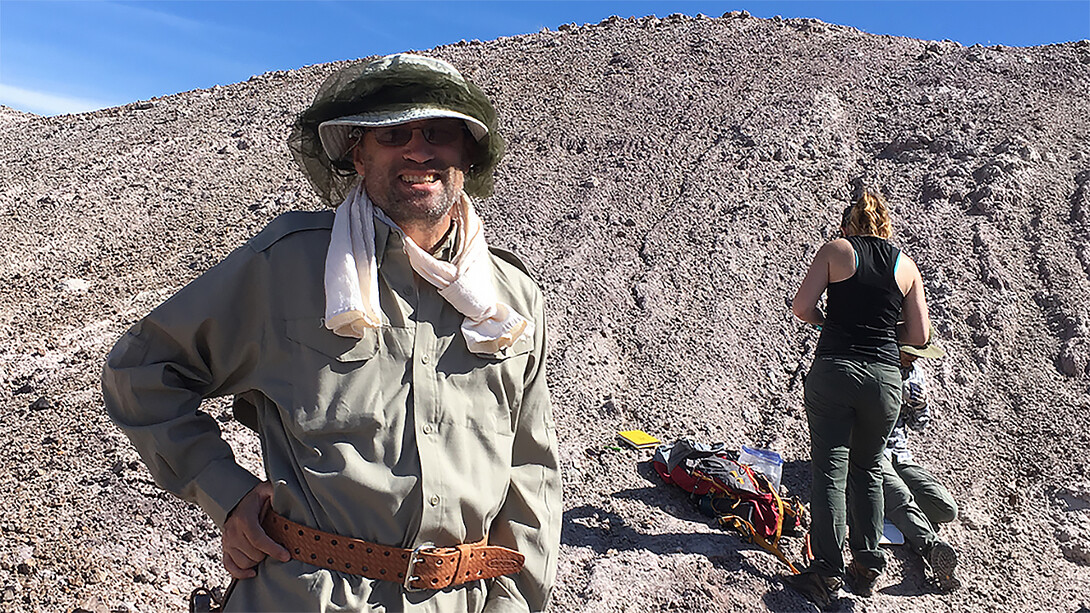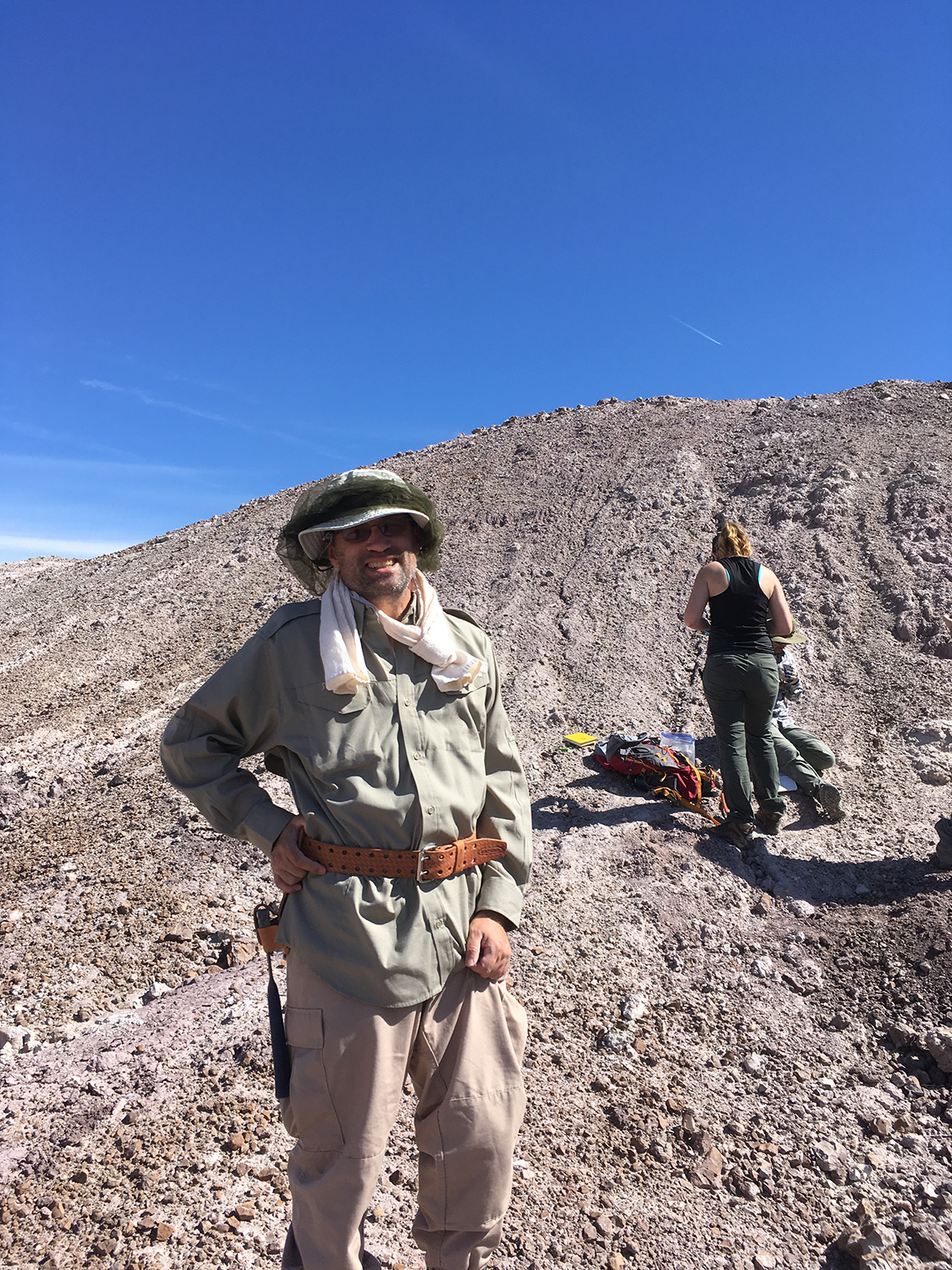
Scientists continue to refine techniques for understanding present-day changes in Earth’s environmental systems, but the planet’s distant past also offers crucial information to deepen that understanding. A geological study by University of Nebraska–Lincoln scientist Matt Joeckel and colleagues provides such information.
Scientific research in recent decades has confirmed that major changes in the global carbon cycle caused significant changes in the Earth’s atmosphere and oceans 135 million years ago, during the early Cretaceous Period. A range of questions remain about the details of climate change dynamics in that era. This new research, involving wide-ranging chemical and radioactivity-based analyses of rock strata in Utah’s Cedar Mountain Formation, helps fill in that knowledge gap by confirming that such carbon-cycle shifts were recorded on land in ancient North America.
The carbon cycle is one of Earth’s fundamental environmental phenomena, involving the ongoing transfer of carbon among the atmosphere, oceans and living organisms, as well as soils, sediments and rocks in the solid Earth. The cycle is crucial to biological processes for living things on land and sea. When large-scale changes in the cycle occur, they can produce major shifts in climate and the oceans’ biological conditions.
“We’re studying how the global carbon cycle has functioned in the past, how changes are recorded in the sedimentary rocks around the world,” said Joeckel, a professor in the School of Natural Resources at Nebraska. The environmental phenomena he and his colleagues analyzed “are exactly the kind of things we’re talking about today, as people increase the input of carbon dioxide into the atmosphere at a much-accelerated rate by burning fossil fuels.”
Joeckel, the Nebraska state geologist, headed the Utah fieldwork and organized the study, published as a peer-reviewed paper in a special February issue of the journal Geosciences.
Over the past two decades, Joeckel and several colleagues have studied a range of geological aspects of southeastern Utah’s Cedar Mountain Formation, known for its exceptional dinosaur fossils. The steep, 150-foot slope where the scientists conducted their recent carbon-cycle research is known as Utahraptor Ridge, named for the discovery there of raptors, the ferocious bipedal predators familiar to moviegoers through the Jurassic Park movies.
To determine whether carbon-cycle changes have occurred, scientists analyze the minute amounts of organic carbon held in rocks for major changes in two carbon isotopes. Carbon cycles are evident if scientists find that significant increases and decreases in isotope ratios occurred over time. Joeckel and his colleagues found evidence for two distinct peaks in a curve representing changes in a key isotope ratio during the early Cretaceous period. This discovery indicates that the Utah site, though on land, experienced the same major carbon-cycle change recorded in marine sedimentary rocks in Europe.
Many geologists refer to this ancient carbon-cycle phenomenon as the “Weissert Event,” which was driven by large, sustained volcanic eruptions in the Southern Hemisphere. These eruptions greatly increased carbon dioxide levels in the atmosphere, producing significant greenhouse climate effects over a prolonged time.
A central uncertainty has been whether carbon-cycle changes recorded in sediments in ancient oceans were also recorded by sediments on land. The work by Joeckel and his colleagues strongly suggests that happened.
Analyzing the Utah samples for these carbon isotope changes was a challenging scientific endeavor, said Joeckel, director of Nebraska’s state Conservation and Survey Division, which conducts a wide array of geological, geographic, water and soil research in the state and beyond.
“We’re talking about a minute amount of organic carbon that has to be very laboriously isolated from fist-sized samples of sedimentary rock,” he said. Such complex work is “like having to go through a whole pile of phone books by hand just to get to the point where you can generate numbers, and you have to generate a lot of them. There’s a lot of hard work in the laboratory that needs to be done.”
To accurately date the carbon-cycle changes, the scientists also analyzed microscopic crystals of the mineral zircon. These crystals “are important because they are a way to actually put an age date on the rocks,” Joeckel said. The volcanically produced zircon crystals are “nearly indestructible treasure troves of information that are spread all over the place” after an eruption.
Joeckel’s coauthors on the paper are Celina Suarez and Garrett Hatzell of the University of Arkansas; Noah McLean, Andreas Möller, Marina Suarez and Joseph Andrew of the University of Kansas; Gregory Ludvigson and Spencer Kiessling of the Kansas Geological Survey; and James Kirkland of the Utah Geological Survey.
The project, Joeckel said, illustrates how geology as a discipline continues to reveal new insights.
“In some ways, the past may be the key to the present, rather than vice versa, as geologists traditionally posited,” he said. “The better we understand the ancient carbon cycle and ancient global change, the more we can understand what happens today.”








